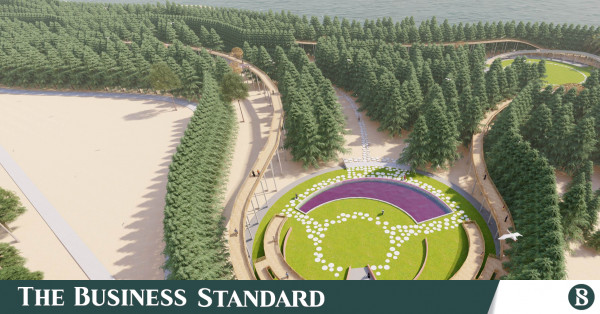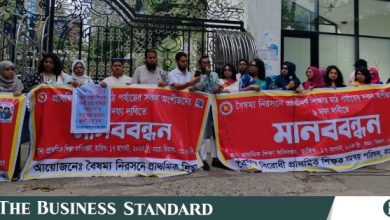8 years on, Sabrang park incomplete, thanks to red tape


Though the development of Sabrang Tourism Park project in Teknaf, Cox’s Bazar was initiated in 2016, the project still remains unfinished.
Authorities concerned and stakeholders said the project’s progress was stalled due to bureaucratic tangles in procuring land, the coronavirus pandemic, lack of substantial development funds and a lax approach in general.
However, according to Beza’s recent five-year plan, all service connections for investors at the park are expected to be completed by 2029.
Tourism experts and industry stakeholders said the project should be completed urgently as Cox’s Bazar, home to the world’s longest natural sea beach, combined with its hills, marine drive, and the coral island of Saint Martin, is a prime destination for international tourists.
The Sabrang Tourism Park, spanning 967 acres near the endpoint of the Marine Drive road in Teknaf, is being developed by the Bangladesh Economic Zones Authority (Beza).
In 2016, Beza initiated the development of three tourism parks across 11,000 acres of land in Teknaf and Maheshkhali upazilas, including Sabrang Tourism Park, Naf Tourism Park, on 271 acres of land, and Sonadia Eco Tourism Park, on 9,467 acres.
However, the overall progress of the projects has been slow, with only Sabrang and Sonadia seeing some form of development.
Talking to The Business Standard, Paban Chowdhury, a former executive chairman of Beza, said, “At that time [in 2016], only land acquisition started, but the progress was slow due to bureaucracy.”
He said after his retirement from Beza in 2021, the project has seen no further development.
According to him, by the time he left, only the administrative building, guest house, photo corner, and security embankment had been completed, with the project still stalled at that stage.
Beza sources said 119.79 acres of land has been allocated to 26 investors at Sabrang Tourism Park, with investment proposals amounting to approximately $421 million.
Beza has planned to complete the infrastructure development of Sabrang within the next five years and to achieve this, they have submitted a four-year project proposal to the government, with a budget of approximately Tk2,000 crore, the sources added.
A significant portion of this budget, around Tk500 crore, is reserved for the construction of a “super dyke,” a strong embankment designed to protect the park from high sea tides, they further said.
However, the project is still awaiting government approval.
Local companies such as Ifad Group, DIRD Composite Textiles Ltd, Patwary Enterprise, East West Travels and Tours, and DIPTA Garments Ltd have acquired land for hotel development at the park.
However, according to representatives from four of these companies, the lack of infrastructure has prevented them from beginning construction.
Two foreign companies also have plans to build hotels at Sabrang. The companies are Singapore-based Inter-Asia Group, which has already acquired 40 acres of land, and Netherlands-based company Lizard Sports.
Reiterating the urgency of completing the tourism park, Mohammed Rafiuzzaman, president of the Tour Operators Association of Bangladesh (TOAB), said the park’s completion will allow foreign tourists to safely enjoy the sea beach even at night, significantly boosting tourism.
Despite Bangladesh having all seven key tourism attractions – rivers, seas, mountains, forests, history, culture, seasonal variations, and hospitality – the country lags behind its neighbours in attracting foreign tourists. In 2023, Bangladesh welcomed 650,000 foreign visitors, with the majority coming from India, followed by the UK, the US, Canada, Australia, and Italy.
In comparison, the Maldives and Sri Lanka attracted 1.8 million and 1.5 million international tourists, respectively.
Talking to TBS, Shiblul Azam Qureshi, a governing body member of the Bangladesh Tourism Board, said, “About 30 lakh Bangladeshis travel abroad annually, causing a significant outflow of dollars.”
“If the initiative to develop the tourism park becomes stagnant, the investments there will also remain stagnant. Therefore, the government needs to prioritise this issue,” he added.
Cable car to connect two parks
According to Beza’s five-year action plan for tourism development, a survey is being conducted for a cable car of about 8.5km from the marine drive adjacent to Sabrang Park to Naf Tourism Park via Netang Hill. The survey is almost complete, and the cable car is expected to be completed by 2026, Beza sources said.
Beza has also taken an initiative to set up an exclusive zone for foreigners in Sabrang Tourism Park. The 100-acre exclusive zone will be the first of its kind in Bangladesh.
The sources also said by 2025, all essential service connections for investors at Sabrang Tourism Park are expected to be completed.
The recently retired Beza executive chairman Md Sarwar Bari told TBS that the land development work at Sabrang Tourism Park has been completed. A detailed project proposal (DPP) has been prepared to ensure all necessary utility facilities for the park, he added.
Progress at Naf and Sonadia tourism parks
According to Beza sources, the master plan for Naf Tourism Park has been approved and the development authority is actively seeking both local and foreign investors to develop the park, which will be located on Jaliar Island on the Naf River near Cox’s Bazar’s Teknaf upazila.
To attract potential developers, Beza issued an international tender on 7 May, inviting proposals to develop the park under a design, build, finance, operate, and transfer (DBFOT) model through a public-private partnership (PPP).
Similarly, the master plan for Sonadia Eco-Tourism Park has also been approved, with the development of the park under PPP receiving in-principle approval.
Sources said Beza has completed several key infrastructure projects, including land development, administrative buildings, dykes, bridges, and power connections at Sonadia park.
The park will feature facilities such as hotel complexes, eco-tourism elements, floating jetties, a marine aquarium, eco-cottages, and floating restaurants.




